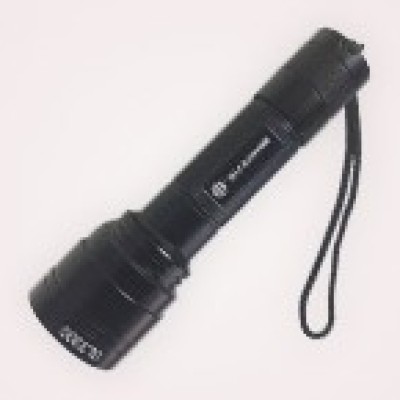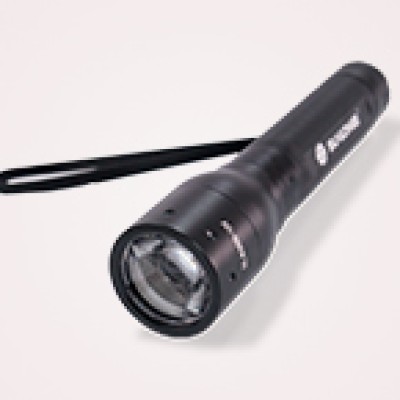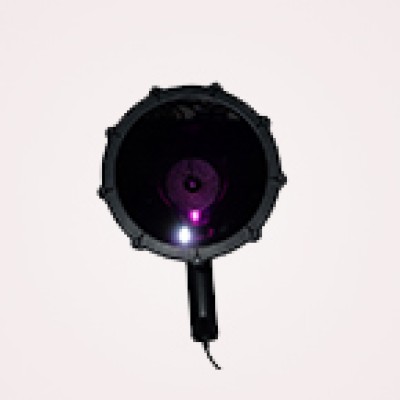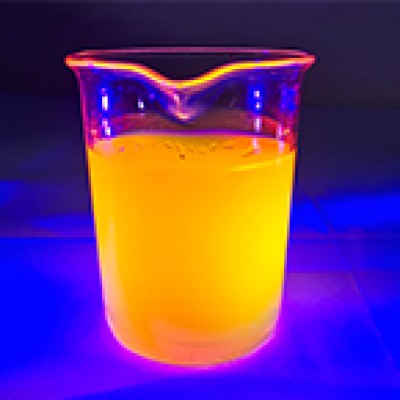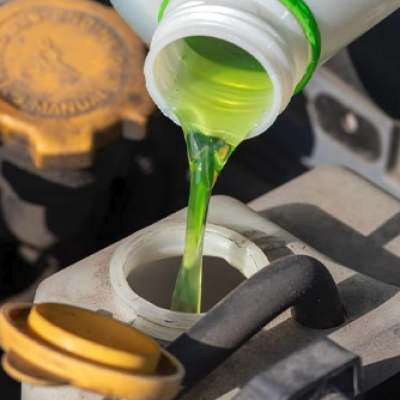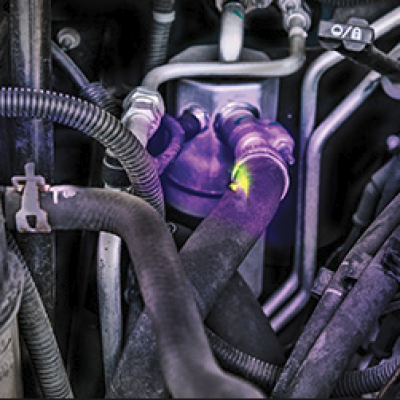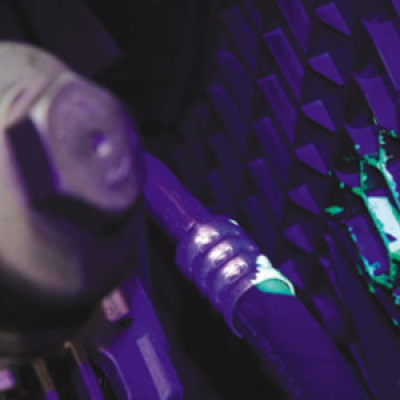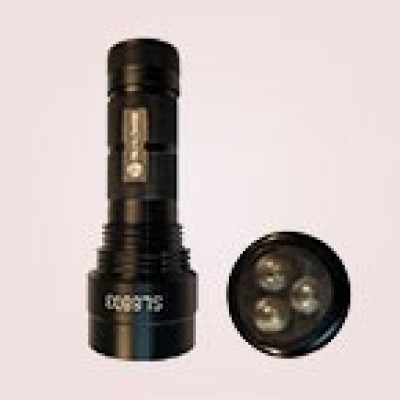Introduction:
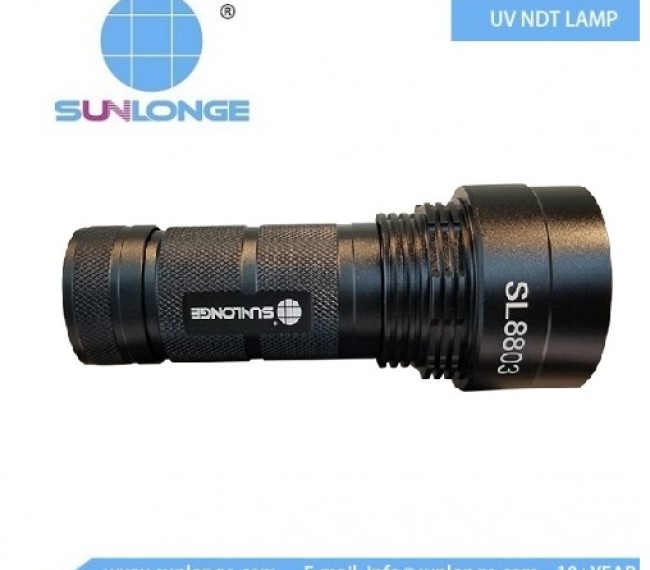
When conducting a home inspection, it’s essential to have the right tools to spot hidden issues that could affect the health and safety of your home. One such tool that can make a significant difference is the fluorescence flashlight. These specialized flashlights are designed to reveal problems such as leaks, mold, and pet stains, which may not be visible under normal lighting. In this article, we’ll explore how to use a fluorescence flashlight for home inspections, highlighting the key benefits, practical tips, and some common uses.
Whether you’re a first-time homebuyer, a DIY enthusiast, or a homeowner looking to detect hidden issues, this guide will help you make the most of this versatile tool.
What is a Fluorescence Flashlight?
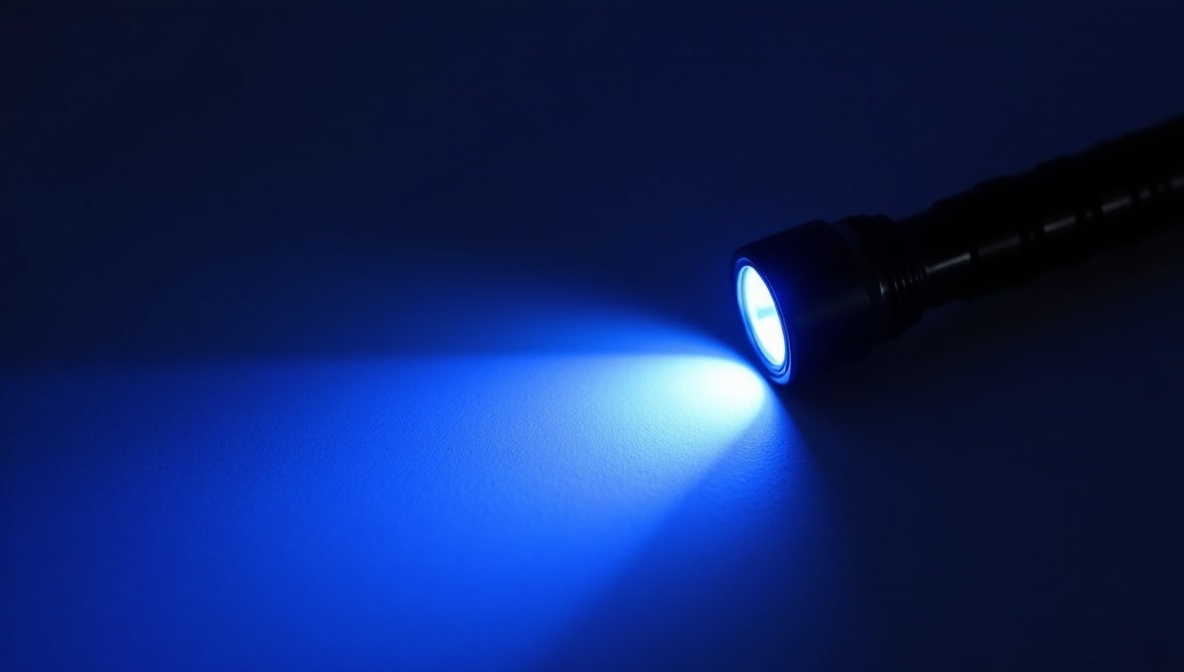
A fluorescence flashlight is a handheld light source that uses ultraviolet (UV) light to illuminate surfaces in a way that causes certain substances to glow or fluoresce. This type of flashlight is highly effective for detecting hidden issues that are not visible under standard lighting conditions. Fluorescence flashlights are commonly used in home inspections to identify problems such as:
Leaks and Water Damage: UV light can highlight water stains or moisture problems, making leaks more detectable.
Mold and Mildew: Mold spores and fungal growths can fluoresce under UV light, allowing inspectors to find hidden infestations.
Pet Stains: Pet urine, which contains proteins that react to UV light, can reveal hidden stains that might not be visible to the naked eye.
How Does a Fluorescence Flashlight Work?
A fluorescence flashlight emits ultraviolet (UV) light, which has a shorter wavelength than visible light. When UV light hits certain substances, such as mold, pet stains, or other contaminants, these materials absorb the light and then re-emit it as visible light, which is often a different color or intensity. This phenomenon is called fluorescence.
Fluorescent Materials: Substances like mold, urine, and water deposits often contain fluorescent properties when exposed to UV light. These materials will glow under the flashlight, making them much easier to detect.
Non-Fluorescent Materials: Other materials, like most metals, wood, or concrete, won’t react to the UV light, which means a fluorescence flashlight won’t highlight them.
Benefits of Using a Fluorescence Flashlight for Home Inspections
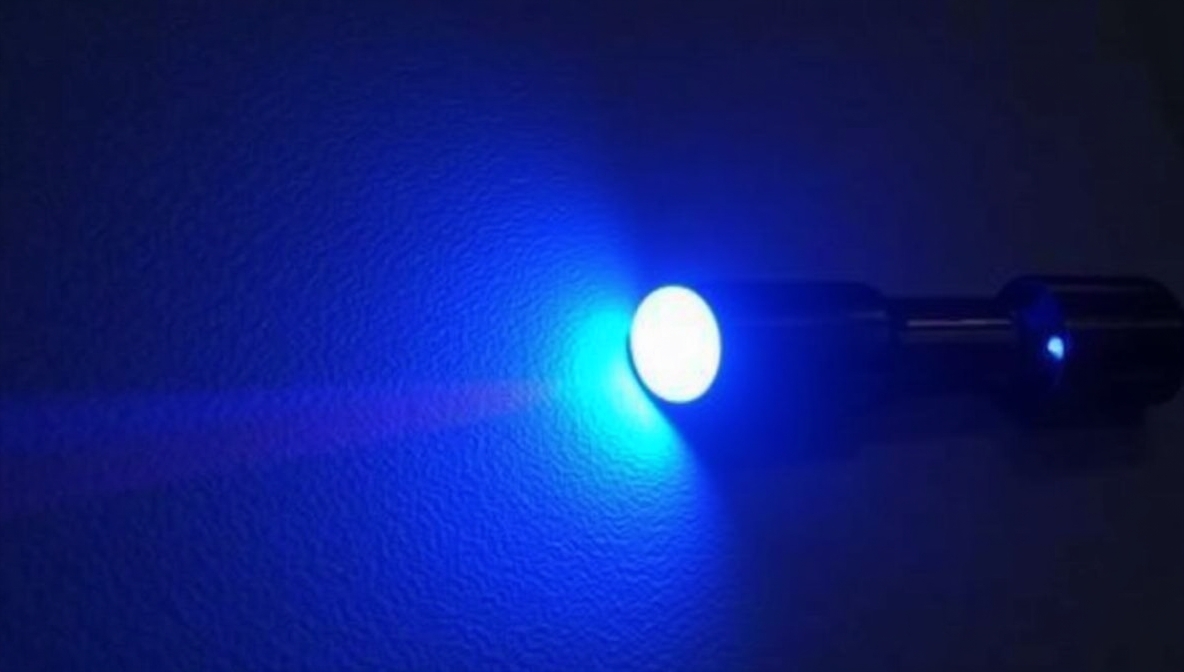
Identify Hidden Mold
Mold growth often thrives in hidden, damp places, such as behind walls, under sinks, or in attics. Fluorescence flashlights make it easier to detect mold and mildew that may not be visible in regular light.
Spot Leaks and Water Damage
Leaks can sometimes go unnoticed until significant damage has occurred. A fluorescence flashlight can help identify signs of water damage, such as moisture stains or damp spots in areas that are difficult to access, like basements or crawl spaces.
Detect Pet Stains
If you have pets, you may have experienced the occasional accident. Urine stains, especially on carpets or upholstery, can be challenging to spot with the naked eye. Fluorescence flashlights can highlight these stains, even if they are old or invisible in normal lighting.
Check for Electrical Issues
Some electrical problems, such as overheating or leaks, can also show up as fluorescent markings, helping homeowners pinpoint potential hazards before they escalate.
How to Use a Fluorescence Flashlight in Home Inspections
Using a fluorescence flashlight is relatively simple, but there are a few steps you should follow to ensure you’re getting the best results during your inspection.
1. Choose the Right Fluorescence Flashlight
Selecting the appropriate flashlight is crucial. For home inspections, you’ll want a flashlight that has the right wavelength (usually in the UV-A range, 365nm to 395nm). Our Sunlonge Fluorescence Flashlight is a great option, as it offers a powerful UV light that can detect a variety of substances, from mold to pet stains.
2. Inspect Moisture-Prone Areas
Begin your inspection in areas where moisture is commonly found, such as bathrooms, kitchens, and basements. Shine the flashlight around corners, under sinks, and behind appliances to spot water stains, mold, or mildew.
3. Look for Fluorescent Marks
As you move the flashlight over surfaces, pay attention to areas that begin to fluoresce. Water stains may appear as glowing patches, mold will often show as a greenish or yellowish fluorescence, and pet stains can fluoresce in shades of yellow or green.
4. Inspect Darker Areas
Fluorescence flashlights are most effective in darker environments where the contrast between the UV light and the surface is clear. Close the curtains or turn off other lights in the room to improve visibility.
5. Check Upholstery and Carpets for Pet Stains
Shine the flashlight on carpets, upholstery, and fabric-covered furniture to detect any pet stains that may have seeped deep into the fibers. Pet urine tends to fluoresce in a bright yellow or green under UV light.
6. Take Notes and Document Findings
As you spot issues, take notes and, if necessary, photograph the areas under UV light. This will help you track problem areas for future reference or communicate issues with professionals, such as mold remediation experts.
Common Problems Detected with Fluorescence Flashlights
| Problem | How it Appears Under UV Light | Where to Look |
| Mold & Mildew | Glowing green or yellowish patches | Behind walls, in corners, under sinks, attics, and basements |
| Water Leaks & Stains | Fluorescent blue or white patches from water deposits | Under sinks, around pipes, ceilings, basements, crawl spaces |
| Pet Stains | Bright yellow or green fluorescence from dried urine | Carpets, upholstery, mattresses, furniture, rugs |
| HVAC Contamination | Fluorescent green or yellow streaks indicating mold or bacteria growth | HVAC ducts, air vents, and around air conditioning systems |
Frequently Asked Questions (FAQ)
- What types of substances can be detected with a fluorescence flashlight?
Fluorescence flashlights can detect substances such as mold, mildew, pet urine, water stains, oil leaks, and some types of bacteria. The substances that fluoresce under UV light are typically organic or have specific chemical compositions.
- How effective are fluorescence flashlights in finding mold?
Fluorescence flashlights are very effective at finding mold, especially when it is in early stages or hidden in hard-to-reach places. Mold will often glow a yellow, green, or blue color when exposed to UV light.
- Can a fluorescence flashlight be used for outdoor inspections?
While fluorescence flashlights are primarily designed for indoor use, they can be effective in outdoor environments when inspecting shaded or dark areas like basements, crawl spaces, or shaded exterior walls. However, direct sunlight can interfere with UV light effectiveness.
- Are fluorescence flashlights safe to use?
Yes, fluorescence flashlights are safe to use as long as you follow the manufacturer’s instructions. UV light is not harmful in the small doses emitted by a flashlight, but it’s always best to avoid looking directly into the UV light.
- Can a fluorescence flashlight replace a professional home inspection?
While a fluorescence flashlight can be an excellent tool for detecting hidden problems, it cannot replace a full professional home inspection. It is a valuable supplemental tool that can help identify issues early, but it should be used alongside a comprehensive inspection by a qualified professional.
Conclusion
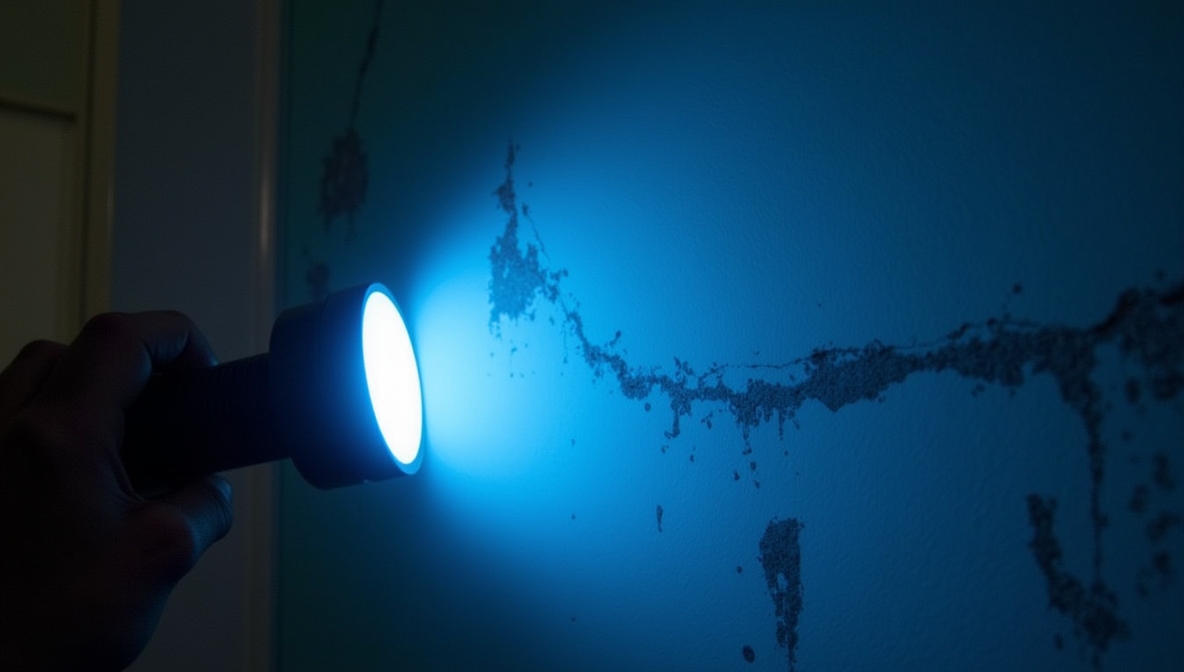
A fluorescence flashlight is an indispensable tool for homeowners looking to detect hidden issues such as leaks, mold, and pet stains during home inspections. With its ability to reveal problems that are invisible under normal lighting, this device can save you time and money by helping you identify potential issues early.
By following the tips and techniques outlined in this guide, you can make the most of your fluorescence flashlight and ensure that your home inspection is thorough and effective. For more information on high-quality fluorescence flashlights, visit our product page at Sunlonge Fluorescence Flashlight.
 CN
CN

